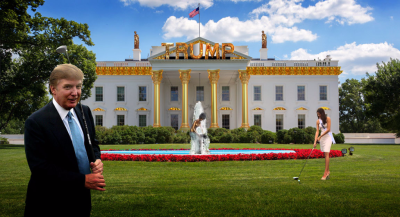by Evert Cilliers aka Adam Ash (original visuals by David Thall)

Here are the main traits that distinguish a psychopath:
1. A lack of empathy
2. A disregard for the rights of others
3. A failure to feel remorse or guilt
4. Grandiose self-worth
5. Pathological lying
6. Glib and superficial charm
7. Cheating, conning and defrauding others for personal gain
8. A tendency to display violent behavior
Remind you of somebody running for president of America?
1. Donald Trump, in the way he responded to the charges of the Khan family, showed a stunning lack of empathy.
2. Donald Trump, in the way he talks about Mexicans and Muslims, shows a stunning disregard for the rights of others.
3. Donald Trump, in the way he jauntily smears John McCain, Mexicans, Muslims, women, and even fellow Republicans, shows no remorse or guilt.
4. Donald Trump, in his stunningly high regard for his own amazingness, has a sense of grandiose self-worth second to none. Nobody in public life has ever exhibited such an amazing degree of narcissism.
5. Donald Trump can lie and then lie about that lie in the same sentence. PolitiFact states that 72% of Trump's public remarks about factual circumstances are false.
6. Donald Trump has an amazing amount of glib and superficial charm.
7. Donald Trump, who all his life has stiffed his business suppliers by not paying them for goods and services rendered unto him, has always been a cheating, defrauding con.
8. Donald Trump has encouraged his followers to commit violence and threatened Hillary Clinton with assassination. He said of the Democratic convention that he felt like hitting many of its speakers. “There was one guy in particular, a very little guy. I was going to hit this guy so hard, his head would spin. He wouldn't know what the hell happened.”
All of this is very true, but when did it become apparent that Trump was actually a psychopath?
Read more »
